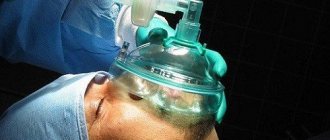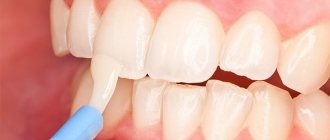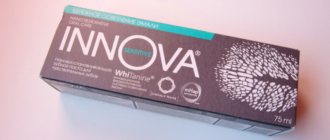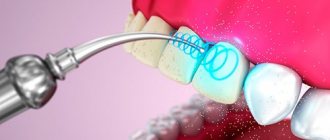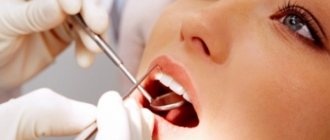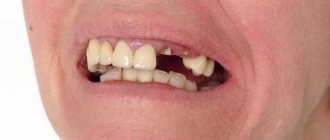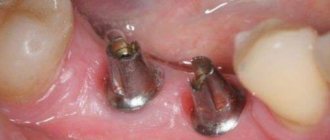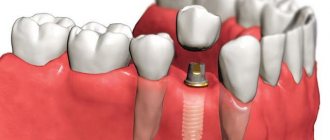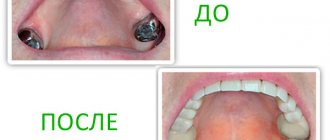The tonsils, the palatine tonsils, are the first to take on an infectious blow through airborne droplets. Surgical removal of important defenders of the body is a last resort for treating complex, infectious, irreversible processes. Restorative measures after removal of the tonsils require compliance with a whole set of measures that allow you to fit into your usual lifestyle without complications.
The first hours after tonsillectomy
Immediately after removal of the lymphoid tissue, there are wounds in the throat. To prevent bleeding, the patient is placed on his side and offered a paper towel to spit out sputum. Throughout the first day, the patient follows several important rules:
- You can't talk for 24 hours. Vocal rest helps to quickly restore the laryngeal ligaments.
- Lying down prevents bleeding.
- You can't eat.
- Adults are allowed to drink sweetened tea at room temperature.
- It is recommended to drink plenty of fluids.
- Small children can eat thin porridge and milk jelly.
- To relieve a sore throat after surgery to remove the tonsils, an injection of an anesthetic is given.
- On the first day, the patient should not swallow saliva, but should spit it out.
- Oral hygiene must be observed very carefully, trying not to damage the mucous membranes.
Upon discharge, the patient is given a leaflet with recommended dietary intake. In the postoperative period, it is necessary to strictly follow the doctor's instructions.
Advice! On the first day you cannot go to the bathhouse, sauna, solarium, or take a hot shower. Drinking alcohol and smoking is prohibited. Tobacco smoke is very irritating to the operated area. On the day of the operation, air travel is prohibited.
Sore throat after anesthesia: reasons, what to do?
Tooth extraction (extraction) is a procedure that dentists are forced to resort to if it is not possible . Tooth extraction is a surgical procedure characterized by discomfort and pain of varying degrees of intensity in the postoperative period.
The doctor always tells the patient about the consequences that he may encounter after extraction, and also gives recommendations on how to eliminate these consequences.
Fully or partially limited products
- Rough and solid food: sausages, fried meat, crackers, bread. They are introduced gradually over a month.
- Hot food and drink, which can cause bleeding, are completely avoided. It is also not permissible to eat excessively cold food (the exception is slightly melted ice cream, which should be eaten in small portions).
- Easily digestible carbohydrates (chocolate, cakes, candies, sugar). A sweet environment is favorable for the proliferation of microorganisms, which is undesirable after surgery.
- Vegetables and fruits with peels and not pureed are excluded for three weeks. Citrus fruits (lemon, tangerines, oranges, grapefruit) have an adverse effect on the mucous membrane and can only be consumed in the form of diluted juices.
- Sauces and marinades, hot spices, garlic, onions and all foods with high acidity. Spicy and rough foods irritate the mucous membrane, inhibiting its recovery process, and spices can provoke swelling of the larynx. It is not recommended to use them in the future. Garlic and onions can be gradually introduced boiled into dishes.
- Alcohol and carbonated drinks, which irritate the pharyngeal mucosa, cause a burning sensation.
- Salted and pickled vegetables are excluded for 2 weeks in the postoperative period. In the future, it is advisable to abandon pickles or consume them rarely.
Table of prohibited products
| Proteins, g | Fats, g | Carbohydrates, g | Calories, kcal | |
| vegetables legumes | 9,1 | 1,6 | 27,0 | 168 |
| cabbage | 1,8 | 0,1 | 4,7 | 27 |
| Brussels sprouts | 4,8 | 0,0 | 8,0 | 43 |
| cucumbers | 0,8 | 0,1 | 2,8 | 15 |
| radish | 1,2 | 0,1 | 3,4 | 19 |
| white radish | 1,4 | 0,0 | 4,1 | 21 |
| turnip | 1,5 | 0,1 | 6,2 | 30 |
| horseradish | 3,2 | 0,4 | 10,5 | 56 |
| garlic | 6,5 | 0,5 | 29,9 | 143 |
| spinach | 2,9 | 0,3 | 2,0 | 22 |
| sorrel | 1,5 | 0,3 | 2,9 | 19 |
| oranges | 0,9 | 0,2 | 8,1 | 36 |
| grapefruit | 0,7 | 0,2 | 6,5 | 29 |
| lime | 0,9 | 0,1 | 3,0 | 16 |
| grape | 0,6 | 0,2 | 16,8 | 65 |
| mushrooms | 3,5 | 2,0 | 2,5 | 30 |
| nuts | 15,0 | 40,0 | 20,0 | 500 |
| dried fruits | 2,3 | 0,6 | 68,2 | 286 |
| pearl barley | 9,3 | 1,1 | 73,7 | 320 |
| Wheat groats | 11,5 | 1,3 | 62,0 | 316 |
| millet cereal | 11,5 | 3,3 | 69,3 | 348 |
| white rice | 6,7 | 0,7 | 78,9 | 344 |
| barley grits | 10,4 | 1,3 | 66,3 | 324 |
| pasta | 10,4 | 1,1 | 69,7 | 337 |
| vysivkovy bread | 9,0 | 2,2 | 36,0 | 217 |
| Rye bread | 6,6 | 1,2 | 34,2 | 165 |
| jam | 0,3 | 0,2 | 63,0 | 263 |
| jam | 0,3 | 0,1 | 56,0 | 238 |
| candies | 4,3 | 19,8 | 67,5 | 453 |
| cookie | 7,5 | 11,8 | 74,9 | 417 |
| cake | 3,8 | 22,6 | 47,0 | 397 |
| crackers with raisins | 8,4 | 4,9 | 78,5 | 395 |
| crackers with sugar | 9,5 | 4,2 | 72,1 | 368 |
| dough | 7,9 | 1,4 | 50,6 | 234 |
| cake | 4,4 | 23,4 | 45,2 | 407 |
| seasonings | 7,0 | 1,9 | 26,0 | 149 |
| mustard | 5,7 | 6,4 | 22,0 | 162 |
| mayonnaise | 2,4 | 67,0 | 3,9 | 627 |
| pork | 16,0 | 21,6 | 0,0 | 259 |
| ham | 22,6 | 20,9 | 0,0 | 279 |
| boiled sausage | 13,7 | 22,8 | 0,0 | 260 |
| dry-cured sausage | 24,1 | 38,3 | 1,0 | 455 |
| sausages | 10,1 | 31,6 | 1,9 | 332 |
| sausages | 12,3 | 25,3 | 0,0 | 277 |
| duck | 16,5 | 61,2 | 0,0 | 346 |
| goose | 16,1 | 33,3 | 0,0 | 364 |
| smoked fish | 26,8 | 9,9 | 0,0 | 196 |
| canned fish | 17,5 | 2,0 | 0,0 | 88 |
| bread kvass | 0,2 | 0,0 | 5,2 | 27 |
| Pepsi | 0,0 | 0,0 | 8,7 | 38 |
| sprite | 0,1 | 0,0 | 7,0 | 29 |
| Fanta | 0,0 | 0,0 | 11,7 | 48 |
| cranberry juice | 0,4 | 0,3 | 11,0 | 46 |
| lime juice | 0,0 | 0,0 | 8,2 | 25 |
| lemon juice | 0,9 | 0,1 | 3,0 | 16 |
| tangerine juice | 0,8 | 0,3 | 8,1 | 36 |
| sea buckthorn juice | 0,6 | 3,4 | 4,3 | 52 |
| * data is per 100 g of product |
Can my throat hurt after tooth extraction?
Thanks to modern methods of anesthesia, the extraction process itself is completely painless, but after 1 - 2 hours , the effect of the anesthetic wears off, and the patient feels pain in the place where the tooth was extracted.
But in some cases, the pain goes to the cheek, ear or throat. Patients often note signs of mild sore throat. According to experts, such consequences of complex tooth extraction are normal and not a reason for concern .
Important! Removing a wisdom tooth is always considered a complex dental procedure , which often provokes a sore throat or ear, as well as swelling of the gums, increased body temperature and bleeding from the tooth socket.
Why does it hurt to swallow?
A sore throat most often occurs after the extraction of lateral chewing teeth or so-called wisdom teeth.
There are three main reasons for this complication:
- Immune response to pain medication. In other words, an allergic reaction occurs, accompanied by dryness, burning sensation and swelling of the pharyngeal mucosa.
- damage during surgery can also cause a sore throat. This pain becomes especially intense when swallowing food and usually subsides 3 to 4 days after surgery.
- Infectious process in the oral cavity. Infection can enter the body due to poorly treated dental instruments. In addition, infectious diseases sometimes occur against the background of existing ailments from which the patient suffers (caries, stomatitis, herpes).
Important! Due to the risk of serious infection , any surgery, including tooth extraction, is postponed if the patient suffers from a runny nose, cough, fever or elevated body temperature.
Possible complications of tonsillectomy
Despite the fact that the operation is not classified as complex and almost always proceeds without complications, their likelihood cannot be excluded.
During the operation:
- swelling of the larynx, which carries a risk of suffocation;
- allergic reaction to an anesthetic drug;
- heavy bleeding;
- aspiration of gastric juice with the development of pneumonia;
- jugular vein thrombosis;
- tooth damage;
- fracture of the lower jaw;
- burns of lips, cheeks, eyes;
- injuries of soft tissues of the oral cavity;
- heart failure.
After operation:
- distant bleeding;
- sepsis (possible with low immunity, in HIV-infected people);
- taste disturbance;
- pain in the neck area.
Ways to combat the disease
There are simple rules that will need to be followed after surgical manipulation in the oral cavity. This is done in order not to aggravate the situation, reduce discomfort and pain and promote the speedy restoration of damaged tissues.
- For 3 to 5 days after surgery, refrain from smoking and drinking alcoholic beverages.
- Avoid foods that are too hard, spicy or hot.
- During hygiene procedures, avoid damaged tissues.
- Do not take hot baths until the pain subsides.
- Do not touch the damaged area of the gum.
Medications
After undergoing surgery to remove the tonsils, the postoperative period includes medications prescribed by the doctor to avoid complications and speedy healing. The standard system of prescribed medications includes:
- Antibiotics - block the occurrence of infections, fight harmful bacteria.
- Immunomodulators - stimulate weakened immunity
- Painkillers - suppress periodic pain syndromes.
- Vitamins - saturate the depleted body with useful elements.
- Antiseptics - have the function of disinfecting the operated area. More often used when rinsing the mouth.
- Coagulants - interfere with the process of blood clotting, helping to avoid postoperative bleeding.
- Anti-inflammatory drugs - block the development of inflammatory processes.
Antibiotics are prescribed for a course of 7-10 days; overdose and independent choice of medications are strictly prohibited. For the first five days after tonsillectomy, it is recommended to refrain from rinsing your mouth. This procedure is prescribed only by a doctor and involves the use of soda solutions, weak salt solutions, herbal decoctions, propolis, chlorhexidine as a base.
Treatment: Rinse to relieve symptoms
Traditional medicine offers many ways to combat sore throat. The most popular and accessible of them are decoctions of chamomile, sage or oak bark, which need to be cooled to room temperature and held in the mouth for several seconds without rinsing.
You can also use medications from the pharmacy:
- Miramistin is a drug with antimicrobial and anti-inflammatory effects. This remedy also stimulates the activity of immune cells and accelerates the healing process of wounds.
- Chlorhexidine is one of the most popular antiseptics, successfully used for more than 60 years . It also promotes rapid tissue healing after mechanical damage and suppresses the activity of pathogenic bacteria.
Photo 1. Miramistin is a common antimicrobial agent, 0.01% solution, 150 ml bottle.
Source: https://dantist55.ru/hirurgiya/bolit-gorlo-posle-operacii.html
Second day
The next day after surgery, the patient needs to talk a lot so that adhesions do not form.
For several days after surgery on the tonsils, the risk of bleeding remains. For the prevention and disinfection of the oral cavity, it is allowed to gargle with 3% Hydrogen Peroxide, diluted in a proportion of 1 tbsp. l. pharmaceutical product in half a glass of warm water.
The doctor gives nutritional recommendations, describing what you can eat after tonsil removal. The diet consists of mechanically and thermally gentle dishes:
- a variety of fruit non-acidic juices;
- puree;
- sour cream and milk;
- slimy soups;
- soaked bread and cookies;
- vegetables and fruits pureed in a blender.
The basic rules of the second day are frequent but small meals with limited salt. Each serving should not exceed 400 grams for 6 meals.
Indications for tonsil removal
Surgery to remove tonsils in patients with chronic tonsillitis becomes mandatory in the following cases:
- With frequent exacerbations (more than 4 episodes over one year), low effectiveness of conservative therapy.
- In case of constant accumulation of purulent masses in the lacunae and tissues of the tonsils.
- With weakened immune defense caused by the inability of the tonsils to protect the body from infections.
- With the development of complications of tonsillitis, spreading to various organs and parts of the body (kidneys, cardiovascular system, musculoskeletal system).
- In cases of a significant increase in the size of the tonsils, leading to an increased risk of breathing problems, the occurrence of abscesses and purulent inflammation in the tonsils, larynx, nasopharynx, upper respiratory tract.
Surgical treatment is recommended for patients in whom the chronic form of tonsillitis leads to a significant deterioration in the quality of life, chronic fatigue, decreased performance, and fatigue.
Third - fifth day after removal
On the third day after surgery, sore throat intensifies in all patients. This is due to the process of regeneration and the formation of granulation tissues. Therefore, nutrition after removal of the tonsils during this period remains gentle. The diet includes dishes:
- cottage cheese pureed with milk, cream;
- boiled porridge in water, meat broth or milk;
- semolina soup;
- meat broth;
- fish puree;
- eggs in a bag or steamed;
- steamed meat, chicken and fish;
- baked vegetables.
After removing the tonsils, it is important not only to prevent infection of the postoperative wound, but also to provide the body with the necessary nutrients. The speed of regeneration depends on the state of the immune system and the method of surgery.
Day of surgery
The doctor decides how exactly the operation will take place. Typically, the entire tonsils are removed. Partial tonsillectomy can be performed in cases of severe hypertrophy of lymphoid tissue.
6 hours before the procedure, the patient is asked to stop eating, drinking dairy products and juices. You can’t even drink water for 4 hours.
Tonsil removal in adults is usually performed under local anesthesia. Half an hour before surgery, the patient is given an intramuscular injection with a sedative, then an anesthetic, lidocaine, is injected into the tissue around the tonsil.
In the operating room, the patient is seated in a chair. Inflamed organs are removed through the mouth. No incisions are made on the neck or chin.
Tonsillectomy options:
Traditional operation. Tonsils are removed using traditional surgical instruments - scissors, scalpel and snare.
Pros: the method is time-tested and well proven.
Cons: long rehabilitation period.
Infrared laser surgery. Lymphoid tissue is excised with a laser.
Pros: almost complete absence of swelling and pain after the procedure, ease of implementation, the operation can be performed even on an outpatient basis.
Cons: there is a risk of burns to healthy tissue surrounding the tonsil.
Using an ultrasonic scalpel. Ultrasound heats the tissue to 80 degrees and cuts off the tonsils along with the capsule.
Pros: minimal damage to adjacent tissues, rapid healing.
Cons: there is a risk of bleeding after surgery.
Bipolar radiofrequency ablation (collaboration). The tonsils are cut off with a cold radio knife, without heating the tissue. The technology allows you to remove the entire tonsil or just part of it.
Pros: no pain after surgery, short recovery period, low complication rate.
Cons: performed only under general anesthesia.
The entire operation takes no more than 30 minutes. After its completion, the patient is taken to the ward, where he is placed on his right side. An ice pack is applied to the neck. You are asked to spit saliva into a special container or onto a diaper. During the day (and during collocation - no more than 5 hours), the patient is not allowed to eat, drink or gargle. If you are very thirsty, you can take a few sips of cool water.
Frequent complaints after surgery are sore throat, nausea, dizziness. Sometimes bleeding may occur.
Depending on the method of tonsillectomy, the patient is discharged home on days 2–10. Sore throat persists for 10–14 days. On the 5th–7th day it sharply intensifies, which is associated with the removal of crusts from the walls of the pharynx. Then gradually the pain disappears.
To relieve suffering, the patient is given intramuscular injections of analgesics. Antibiotics are indicated for several days after surgery.
What can you eat after tonsil removal in a week?
Although the sore throat has subsided during this period, the wound surface is still irritated and the risk of bleeding remains. The diet after removal of the tonsils in adults and children includes varied but gentle dishes.
The diet after tonsil removal has a number of features. Until the pain and discomfort in the throat completely disappears, patients should adhere to the following rules:
- It is recommended to take the food cold;
- food intake should be fractional - in small portions, but more often than usual;
- before lunch and dinner it is allowed to take anesthetics to relieve pain;
- food should be soft, without hard lumps;
- dishes should only be steamed;
- After removal of the tonsils, it is recommended to eat ice cream to reduce pain and stop bleeding.
Drinks and foods that irritate the throat - sauces, marinades, sharp cheeses - are excluded from the diet. It is necessary to avoid fatty, canned foods. The menu should be balanced so that the patient receives nutrients without weakening the body.
How to overcome tonsillitis?
Doctor of Medical Sciences, Professor of the Department of Otolaryngology at St. Petersburg State Medical University. acad. I. P. Pavlova, author of the books “How to learn to cure colds”, “Treatment with aromas”, “How to keep a teacher healthy” Galina Vladimirovna Lavrenova
The bottom line. Tonsillitis is an inflammation of the tonsils, which are colloquially called tonsils.
Manifestations. This disease manifests itself with rather unpleasant symptoms - periodic fever, weakness, fatigue, sore throat. And in the almond lacunae, purulent plugs can form, which cause bad breath.
Complications. The most dangerous thing about tonsillitis is its complications. Here the entire body is at risk, because the infection that is present in the tonsils can spread to any organ. The joints, kidneys and heart are most often affected.
Even a woman’s reproductive system may be at risk. Recently it was found that tonsillitis is one of the causes of infertility.
Treatment. Doctors try to preserve the tonsils for as long as possible. Why? After all, they are a source of infection and potential danger to the body. Tonsillitis can cause very serious kidney and heart diseases. Isn't it easier to remove the unfortunate tonsils?
It turns out that not everything is so simple and unambiguous. The fact is that the palatine tonsils are an immune organ; substances are produced here that protect us from bacteria and viruses. They take the brunt of the infectious attack, and while this function remains, doctors do not recommend removing the tonsils. Instead of surgery, conservative therapy is prescribed. It includes general health-improving medications, vitamins, physiotherapeutic procedures, and immune system stimulants.
Chronic tonsillitis responds well to treatment with local antiseptics. Their role can be played by lozenges and cough lozenges. Or you can resort to traditional medicine. For example, rinsing with brewed eucalyptus leaves works great. Their bactericidal effect is three times greater than that of penicillin, so this method is highly effective.
A decoction of celandine herb also gives very good results. They need to gargle 2-3 times a day for a week. Propolis has a noticeable disinfecting and immunostimulating effect. One teaspoon of its alcohol tincture should be dissolved in a glass of warm water and gargle with this solution. You can also make applications: attach a piece of propolis to your back teeth overnight. But this can only be done by those who have never been allergic to honey or bee products in their lives.
Diet is also very important. For chronic tonsillitis, orange and pomegranate juices are very useful. The latter must be drunk slowly through a straw so that the acid does not damage the tooth enamel. It’s good to regularly consume cranberry and lingonberry fruit drinks, and, oddly enough, doctors recommend cocoa with milk and sugar. This drink is also included in the diet for inflammation of the tonsils.
Indications for surgery. As a rule, conservative treatment of tonsillitis gives good results. But in some cases, the patient is offered surgery. This happens if an exacerbation of the disease - and this is nothing more than a sore throat - repeats 2 - 3 times a year. Another reason for surgery is protein in the urine that appears after a sore throat. This means that the disease has caused complications on the kidneys, and it is time to remove the tonsils.
Another alarming factor is the constant enlargement of the submandibular lymph nodes. They become larger due to the fact that they take over the functions of the tonsils, and they become practically useless. Then it is quite possible to prescribe an operation.
The operation is performed in just a few minutes, and then the patient must strictly adhere to the doctor’s recommendations. All of them are aimed at preventing bleeding. Therefore, the operated person should not eat hot food, visit the sauna or bathhouse - in general, overheating should be avoided by all means. For the same purpose, it is forbidden to take a bath; washing is only allowed in the shower.
As for the diet, its principle is simple: you need to eat pureed warm food. Mashed potatoes, pureed meat, yogurt, and sour cream work well. You can mash a banana and mix it with a little water. Of course, you can’t eat spicy foods or drink carbonated drinks - they cause a cough, which can cause bleeding. The gentle regime must be followed for two weeks, and then you can slowly move on to your usual way of life.
How long does your throat hurt after tonsil removal?
The postoperative period on the third day after removal is characterized by increased pain at the site of the tonsils. This is due to fibrin deposition.
Over the next 6 days, epithelial cells form in the place where the tonsils were. The tissue healing process is accompanied by the deposition of white plaque, which disappears by the end of the week.
The patient is discharged home on the second to tenth day, depending on the procedure for removing the tonsils. The longest rehabilitation is observed after the classical method of tonsil removal, the shortest – after coblation.
Important! After any type of surgery, pain persists for 2 weeks. Throughout this period, the patient must carefully monitor his throat, following the recommendations for the use of medications. It is just as important to follow a diet.
Full recovery after tonsillectomy lasts 22–23 days. By this time, the wound has healed, acquiring a homogeneous structure. In the place where the palatine tonsils were, new mucous membranes form. In children, recovery occurs faster. In addition, they tolerate surgery more easily.
How to relieve headaches after surgery
If you have a headache after anesthesia, treatment options can only be determined by a qualified doctor. If spinal anesthesia was used, it is recommended to spend the first postoperative hours lying down, without a pillow. You should not turn your head, try to get up, or even stand up unless your doctor gives permission.
On the first day after surgery, it is recommended to strictly follow the doctor’s instructions. It is not advisable to walk or even sit; you are only allowed to roll over, move your limbs, and carefully turn your head.
Treatment of headaches that appear as a result of anesthesia is carried out using several methods. The use of medications, the introduction of saline, an epidural patch - only the doctor decides what will most effectively cope with the complications of surgery. Each method has its own characteristics, limitations, and side reactions.
Medicines
Headaches that occur after epidural anesthesia are not uncommon, so you should not tolerate them; it is better to inform your doctor about the unpleasant sensations immediately. Most often, pharmaceutical drugs are used for complications.
Medications for headaches are prescribed:
- Narcotic painkillers. A single use of drugs that can cause addiction is recommended. The analgesic effect lasts up to 10 hours.
- Anti-inflammatory non-steroidal drugs. They relieve headaches that appear after the administration of anesthesia, and remove swelling at the injection site.
- Painkillers that do not have a narcotic effect. They are administered intramuscularly, pain does not bother you for up to 5-8 hours.
- Antiemetic drugs. The use of these drugs is recommended only for general malaise and severe attacks of nausea.
- Plasma substitutes. They are used for a sharp drop in blood pressure and prolonged headaches.
Drug treatment after tonsillectomy surgery
In addition to proper nutrition, the operated patient undergoes a full course of drug therapy. Complex treatment includes the following drugs:
- Antibiotics prevent the proliferation of pathogenic bacteria.
- Immunostimulants accelerate the production of natural protective substances and increase the body's resistance to bacteria and viruses.
- Coagulants promote blood clotting, which is necessary to prevent bleeding.
- Nonsteroidal anti-inflammatory drugs reduce sore throat and eliminate swelling of the pharyngeal tissue.
- Vitamins stimulate the regeneration of cells in the operated area and accelerate metabolic processes.
Antibiotics are prescribed only by a doctor for 7–10 days. Do not interrupt the course of treatment or change the dosage. Drugs are selected depending on the patient’s condition and contraindications.
Removal of tonsils during the rehabilitation period is accompanied by an increase in temperature to 37.0–37.5 °C and an increase in cervical and submandibular lymph nodes. This reaction of the body indicates recovery processes.
Proper nutrition helps restore strength and speed up healing after tonsillectomy surgery. The diet should be complete, but gentle.
Steamed dishes prevent irritation of wounds and prevent increased pain. Recovery occurs much faster if you follow the doctor’s recommendations and give up bad habits.
Why does my throat hurt after anesthesia? – Treatment at home
Various operations require anesthesia. It often happens that after anesthesia, the throat hurts, as well as the chest, legs and other parts of the body or internal organs. In the modern world, danger can await a person absolutely anywhere, and a hospital is no exception to this rule. The consequences of surgery or anesthesia can be very critical for the body.
What is anesthesia?
Most people believe that anesthesia is a pain reliever that helps surgeons perform an operation without disrupting the functioning of the nervous system, which will react to pain with shock (this can lead to death).
In fact, anesthesia does not provide pain relief as much as it protects the body during surgery. An anesthesiologist has to study for a long time to understand all the risks and possible complications after anesthesia.
An experienced doctor must correctly calculate the severity of the operation, the patient’s weight, his illness, and much more. Only an anesthesiologist can choose the correct dose of medication, but not a surgeon. Every patient should remember this.
Return to zmistAdjustment after anesthesia
Not everyone knows that anesthesia can greatly affect the body and lead to various disruptions in its functioning. In medical practice, it is customary to divide possible complications into several groups, which are divided according to the frequency of occurrence.
Naturally, the rarest complications include death and coma. But the most common reactions include many minor disorders that cause great concern in patients.
It is worth considering the most common complications and how to eliminate them.
In the first place are cases when the patient has pain in his muscles and joints. This complication may not be very noticeable, but it continued. Complications are especially severe in the lower back and shoulders. The hand may become numb for a short time. The jaw sometimes loses mobility, but all these disorders pass rather quickly.
The second most common symptom is pain in the throat, but this pain is often lost amid nausea. If you correctly adhere to the regimen prescribed by your doctor, then you can forget about nausea; it will not arise.
As mentioned above, sore throat is a fairly common complication after anesthesia. If nausea can be avoided by following a regimen, then a sore throat occurs for completely different reasons.
These include not only the effect of the drugs themselves, but also external damage (for example, doctors can scratch the throat with a tube). This doesn’t happen often in medical practice, but there is still a risk.
A sore throat can manifest itself either independently or against the background of other complications, for example, fever, fever, and the like. The severity of pain is also varied; it can be mild or unbearable. Pain can only occur when swallowing or talking, etc.
Sore throat can be completely different, sometimes dryness in the mouth or larynx itself may appear instead, but these consequences are absolutely identical in terms of the reasons for their occurrence and course.
It is worth remembering that a sore throat or dryness is not so much a complication as it is a consequence of anesthesia. This means that the symptoms should go away as soon as possible. There is a rule: if the dryness does not go away within a few hours, and the pain does not go away within 2 days, then you should consult a doctor (this must be done immediately).
Return to pain relief
Of course, any pain symptoms can be relieved with medications or folk remedies. It is best to get rid of dryness and discomfort in the throat with folk recipes. They spare the mucous membrane of the larynx and do not irritate it even more.
The first way to get rid of discomfort and dryness is to gargle with salt water with the addition of iodine (one drop). This method may seem strange to many, but it is quite effective.
You can replace salt and iodine with infusions of various herbs. Licorice root is excellent for this purpose; gargle with it every 2-3 hours. You can add a little sage to the infusion; it will prevent the pain from becoming even stronger.
In addition to rinsing, you can drink chamomile infusion or tea with honey. They relieve pain and moisturize the throat. Sometimes doctors recommend drinking tea with lemon, but this should be done in small quantities. Of course, lemon is enriched with various vitamins, especially vitamin C, but it is the latter’s influence that can increase pain and irritation.
If it is not possible to be treated with folk remedies (although many dry herbs are sold in pharmacies) or there is simply no desire, then you can resort to traditional medicine. There are several medications that relieve throat irritation.
First, you need to gargle with furatsilin or its analogues. These medications are great for relieving irritation, but are less beneficial than herbs. Secondly, you can use lozenges, for example, Lizobakt or Faliminitis.
If you still cannot relieve the pain and it does not subside for several days, then you urgently need to consult a doctor for help.
Return to Zmistuinshi complications
If your throat hurts after anesthesia, then most likely the patient will exhibit other symptoms that will also negatively affect the patient’s condition.
As mentioned above, one of the accompanying symptoms is nausea. With the right regimen, it may fade or not appear at all, but if the doctor’s recommendations are not followed, it occurs during rapid movements, anxiety, and even weak physical exertion.
If nausea bothers you, then dizziness will definitely begin. It can lead to fainting or lightheadedness. Nausea and sore throat have the same causes.
Dizziness often occurs due to dehydration or low blood pressure. In such cases, the patient is prescribed bed rest and proper, balanced nutrition.
The rarest symptom is headache. It occurs due to dehydration. Usually the complication goes away quickly, but if the headache occurs along with a sore throat, the patient may experience unbearable attacks. It is advisable to consult a doctor so that he can prescribe the correct regimen, or ensure peace of mind.
In general, a sore throat after anesthesia is a common consequence - in itself it rarely causes severe discomfort, and the discomfort is easy to relieve.
If they occur along with other complications and consequences, then only a doctor can quickly improve the patient’s condition.
Source: https://ok-doctor.xyz/pochemy-posle-narkoza-bolit-gorlo/

